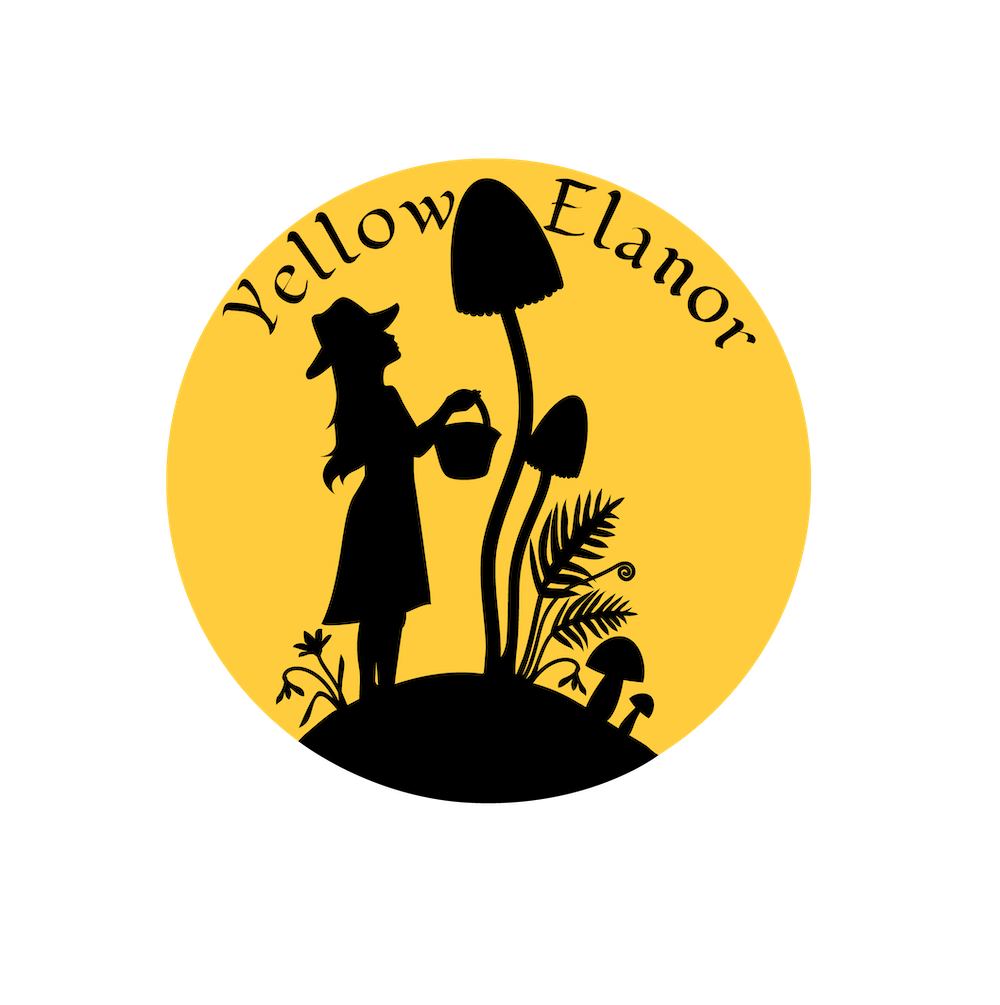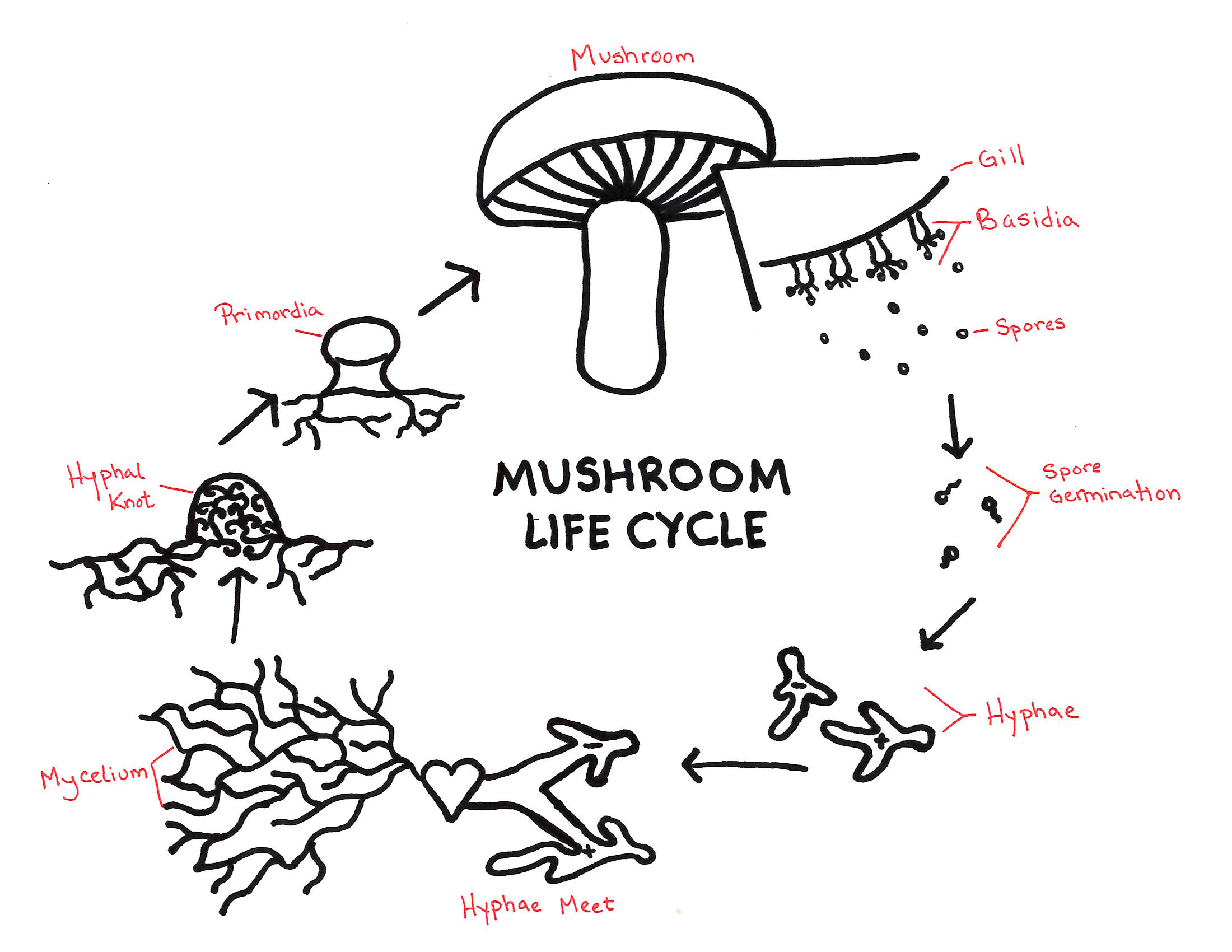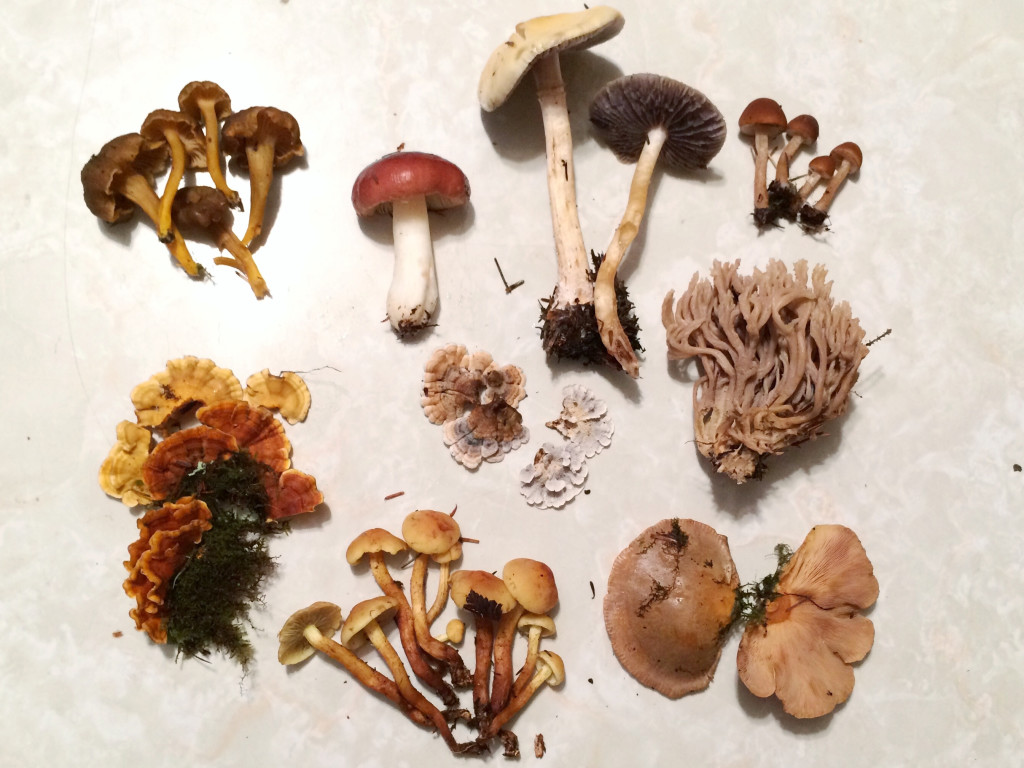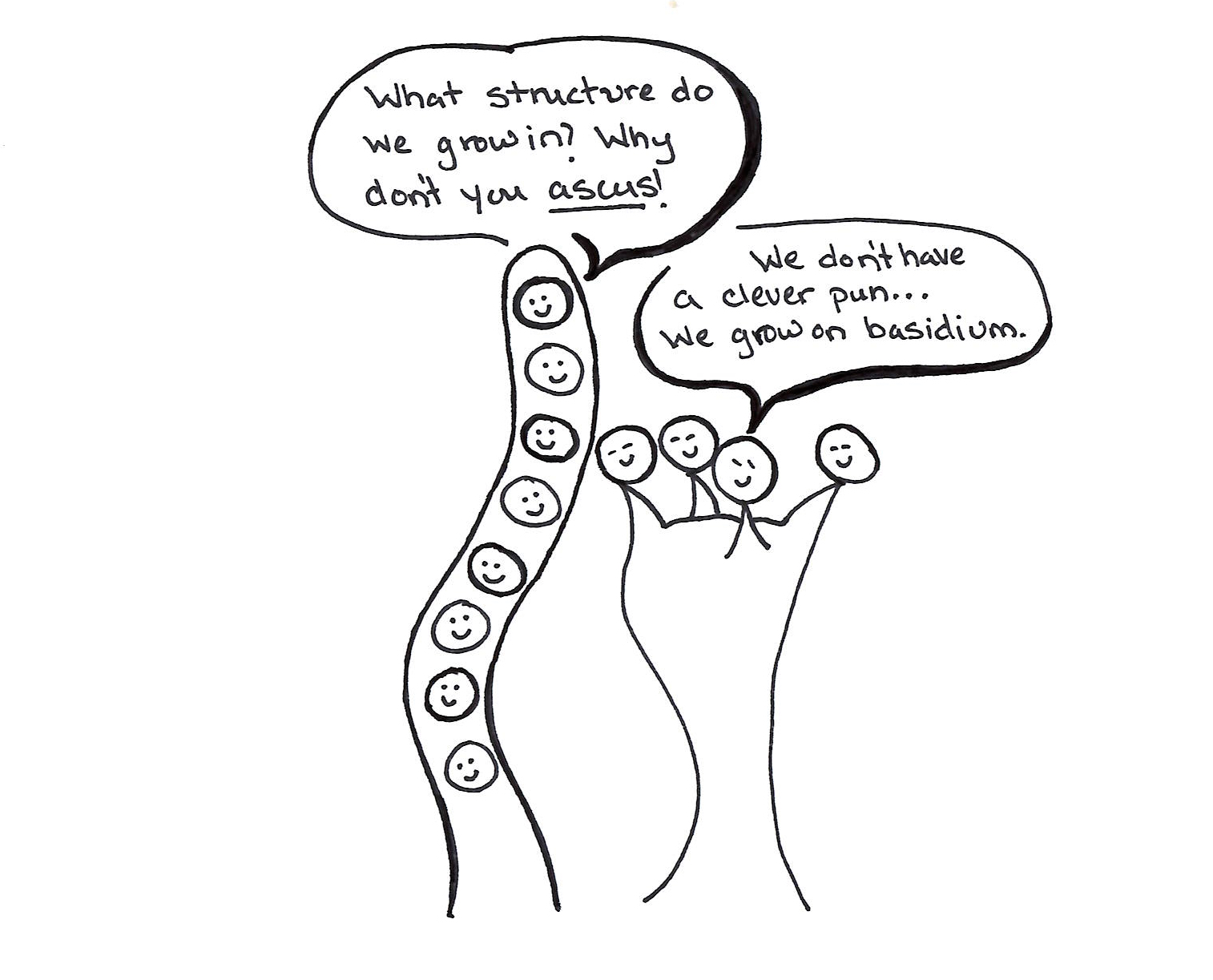Mushroom Life Cycle:
When I began my journey (and obsession) with mushrooms, understanding the basic life cycle helped me in many ways. First, it forced me to learn terminology that I otherwise tried to ignore and it also made me a better identifier and hunter of mushrooms. Ultimately though, it made me appreciate the intellect of nature’s design-not just with the mushroom, but in the interconnection of the mushroom with everything around it.
Let’s take a (very) basic look at the lifecycle of the mushroom, starting with the most recognizable part of a fungi-the fruiting body-the mushroom itself.
The Mushroom: The fruiting body of fungi. Just as a tree produces fruit that contain seeds for reproduction, the fungi’s ‘fruit’ is the mushroom and the mushrooms produce spores (like seeds). (If you’d like more of an explanation on the difference between a fungi and a mushroom, click here.)
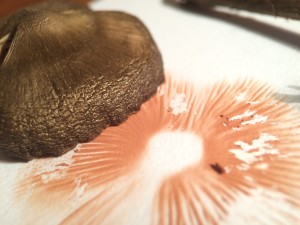
Spore: Reproductive units of a fungi, microscopic and usually single celled but not always, similar in function as a seed is to a flowering plant.
Mushrooms have a variety of ways they release their spores and assure reproduction, it’s one of the most fascinating aspects of a mushroom. And as varied as mushrooms are, spores come in all kinds of shapes and sizes as well.
You’ve possibly heard the terms Basidiomycetes and Ascomycetes, these are two dominant subdivisions of fungi, they are separated by the style of structure that produce and release spores.
Basidiomycetes, think of the typical gilled mushroom with a stem and cap. Basidiomycetes produce their spores on club shaped structures called ‘basidium’, the spores are produced on the outside of small tips on the end of the basidium. Typically producing four on the end of each basidium, those spores are called basidiospores.
Oyster mushrooms are basidiomycetes, you can see this Oyster mushroom releasing it’s spores as they swirl away from the mushroom.
Ascomycetes make up approximately 75% of fungi, they consist of things like cup fungi, truffles and morels. Ascomycetes produce their spores on the inside of long, sac like structures called ‘asci’ (plural ‘ascus’). An ascus typically produces eight spores in each sac like structure, the spores are called ascospores. Though these two spore bearing structures are different, the purpose remains the same: produce and project spores to populate the area with new mushrooms.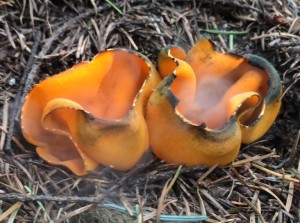
Cup fungi are ascomycetes, the inner surface of this cup fungi was stimulated by wind and began to release it’s spores.
In most cases, thousands upon thousands of spores are released from a single mushroom, in fact some species are said to produce over 30 billion sores a day! Some spores are able to start the reproduction process within the same day of being released, others have a specific process they must undergo before they are ready to germinate. There are many ways a spore ends up becoming capable of reproduction, not all of these reproductive processes are fully understood as of yet, and of the ones that are somewhat understood it would take much too long to explain them all. For the sake of simplicity, we are going to talk about the ‘sexual reproduction’ process that a mushroom goes through.
When a spore germinates, a threadlike structure called a hypha forms from the spore. As a hypha grows, it branches out and eventually connects with a separate hypha from a compatible spore. Now when it comes to sexual mushroom reproduction, they don’t necessarily have ‘male’ and ‘female’ structures, but rather ‘mating types’ that are sometimes referred to as ‘positive’ and ‘negative’ or ‘plus’ and ‘minus’. When two compatible hypha meet, they exchange genetic data, with this exchange the hypha now have the completed information they need to become reproductive. The conjoined hyphae rapidly begin to branch out and this branched network is called mycelium.
Hypha: Plural, hyphae. The threadlike fungal cell that together make up the fungal body called mycelium.
Mycelium: The vegetative part of the fungi, made up of a complex network of hyphae, often resembling a ‘root system’ for the mushroom where nutrient and chemical exchanges happen.
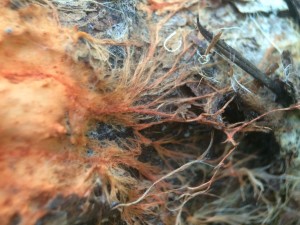
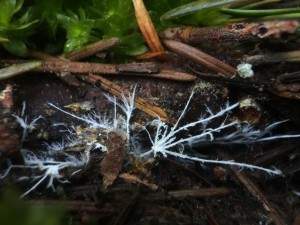
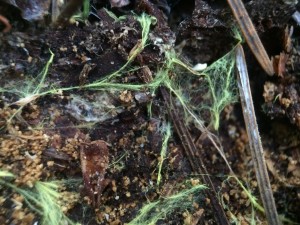
Examples of mycelium. If you look under debris, sticks or logs and you’re likely to find it networking itself into the surrounding material.
Mycelium can grow far and wide, connecting over great distances and creating an incredibly vast network beneath our feet. You may hear the term ‘mycelial mat’, this refers to the area of the ground, usually just below the surface, that is intertwined with mycelium-sometimes dense enough that the dirt and duff stick together from the strength of the mycelium.
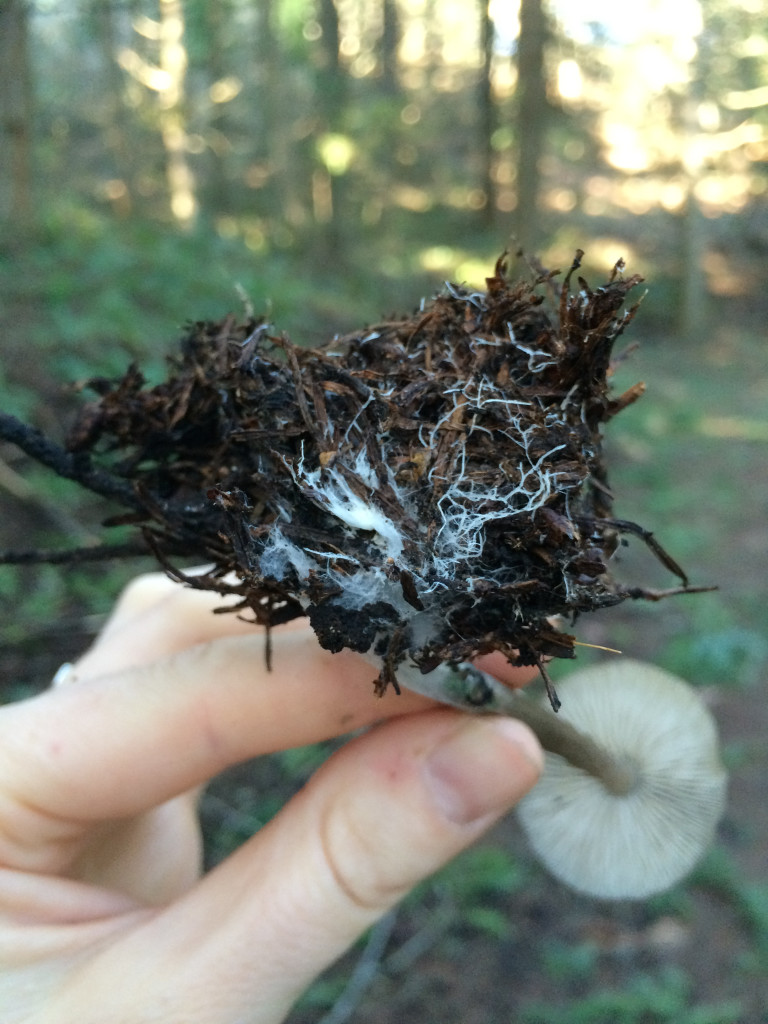
Mycelium intertwines itself around and within the soil, in these two photos you can see how dense the mycelium can grow, enough to hold debris and dirt together.
When the ideal temperature, moisture and nutritional factors line up, the mycelium begin the process of creating a mushroom. Mycelium tightly winds itself, twisting and compacting into what is called a hyphal knot, growing into the slightly recognizable shape of a mushroom. This small tiny mass of mycelium that looks like a baby mushroom is called a primordium.
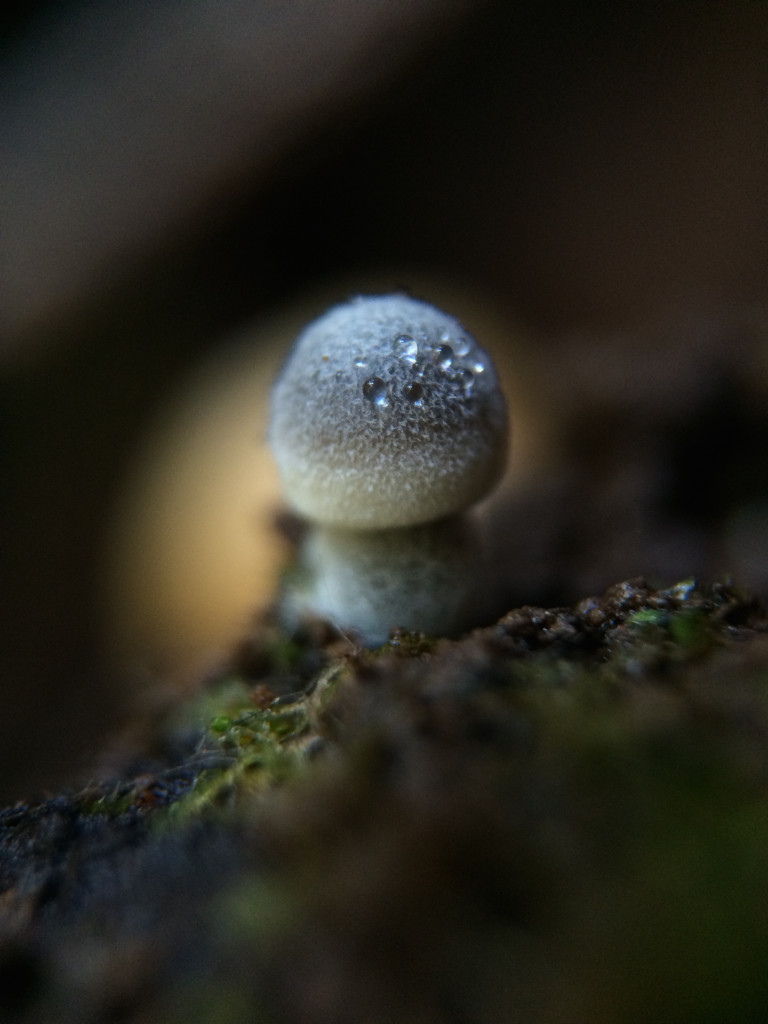 Primordium: The earliest recognizable stage of an organism as it develops, in this case, a mushroom.
Primordium: The earliest recognizable stage of an organism as it develops, in this case, a mushroom.
The primordiam continues to develop and our baby mushroom starts to grow up. Some mushrooms are predeterminate and some are indeterminate-what does that mean? A predeterminate mushroom forms with all it’s required parts (stem, cap, gills for example) in the most early stages of life, meaning it is ‘pre-formed’ and if damaged while young, those defects will show up in the mature mushroom. An indeterminate mushroom’s shape is not yet determined until mature. While maturing, this mushroom determines its ultimate shape based on it’s surroundings. A indeterminate mushroom may face an obstacle as it matures, like a twig, and it will grow around it, even engulfing it. If damaged, they recover without much, if any, disfigurement.
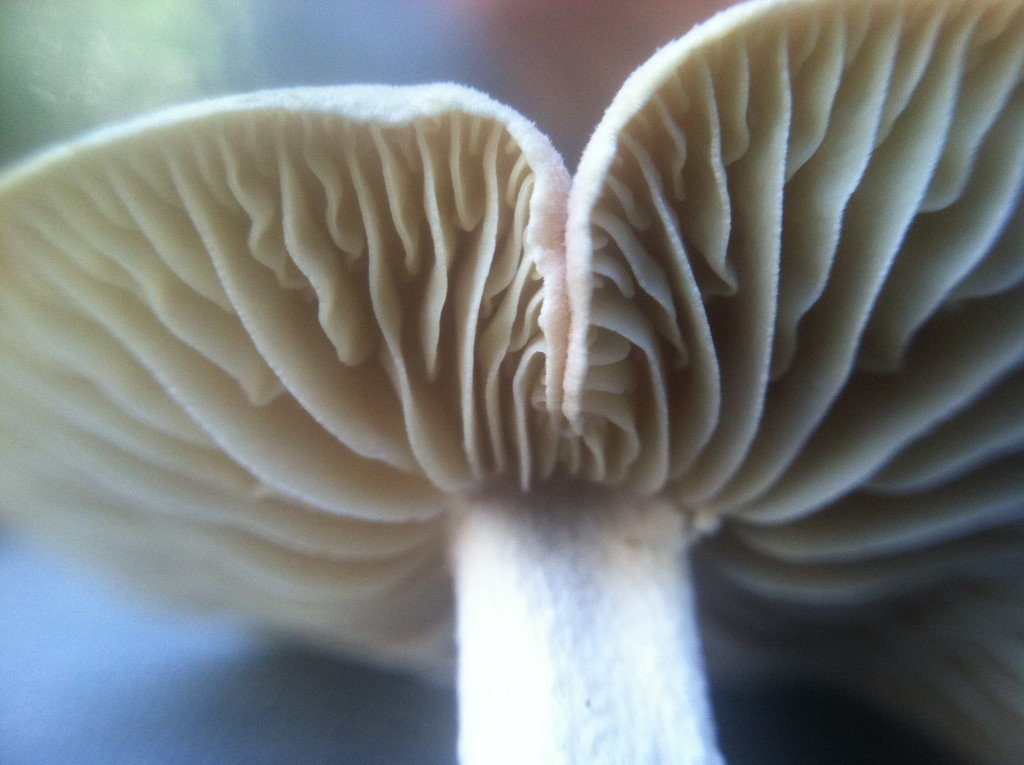
This irregularly shaped cap is an example of a predeterminate mushroom being damaged at some point in development, and that damage still being present at maturity.
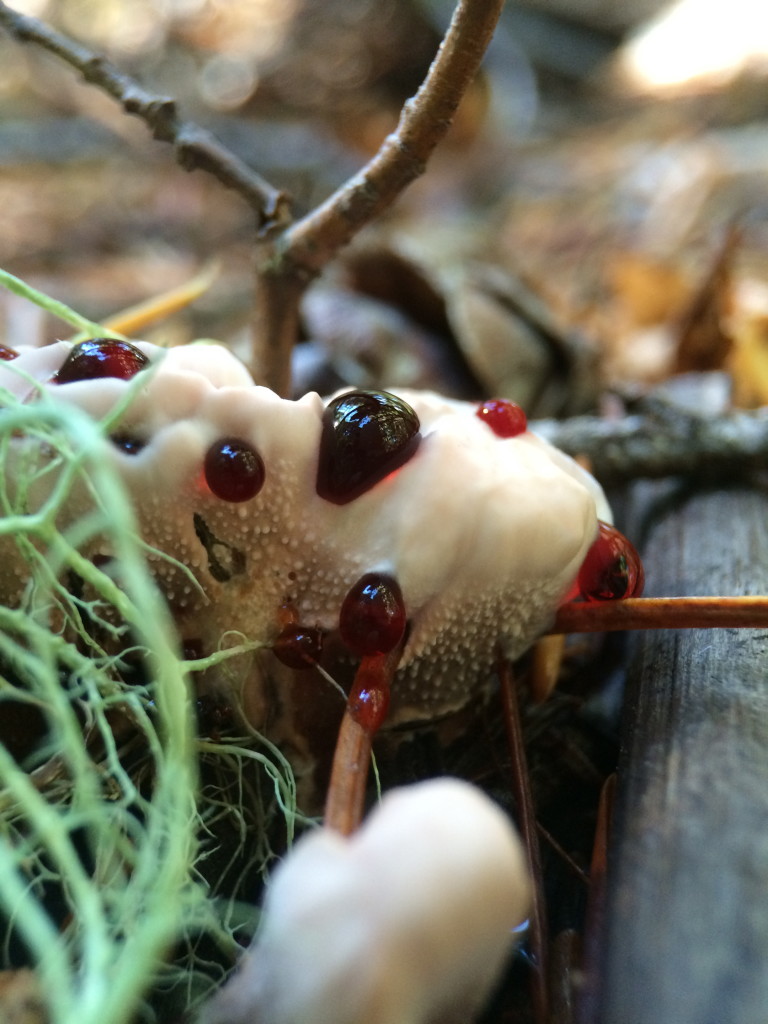
This bleeding tooth fungi is an example of an indeterminate mushroom. Notice the pine needles enclosed in the mushroom flesh? As the mushroom develops it adjusts to it’s surroundings even if that means growing around certain things, notice the stick above the mushroom? It is actually fully enclosed by the mushroom flesh.
Once the mushroom reaches maturation, then the process of producing spores and releasing them takes place and the cycle continues. For those of you who follow my Instagram page, you’ll often see posts about the variety of ways mushrooms creatively assure their spores are released at just the right time in just the right way. We’ve already talked about what happens to the spores, but what of the mushroom after the spores have been released (if it hasn’t been gathered for the table by a hungry hunter).
Many bugs, worms and other critters begin to partake in a meal of decaying mushroom until its in an almost unrecognizable state. A mushroom’s spores germinate creating a thick mycelium network over the dead mushroom’s left over flesh. Then the mycelium retreats back into the dirt and duff where it hides from our view but continues to busily spread life.
To Recap: Spores germinate to hyphae, hyphae connect forming mycelium. Mycelium form primordium that mature into mushrooms that release spores, the mushrooms decay assisted by bugs and mycelial consumption. (Give yourself a pat on the back if you understood that!)
The Terminology:
Ascomycete: Mushrooms that produce their spores on the inside of long, sac like structures called ‘asci’ (plural ‘ascus’). An ascus typically produces eight spores in each sac like structure, the spores are called ascospores.
Basidiomycetes: Mushrooms that produce their spores on club shaped structures called ‘basidium’, spores are produced on the outside at the end of small tips. Typically producing four on the end of each basidium, those spores are called basidiospores.
Hypha: Plural, hyphae. The threadlike fungal cell that together make up the fungal body called mycelium.
Mushroom: The fruiting body of fungi. Just as a tree produces fruit that contain seeds for reproduction, the fungi’s ‘fruit’ is the mushroom and the mushrooms produce spores (like seeds). (If you’d like more of an explanation on the difference between a fungi and a mushroom, click here.)
Mycelium: The vegetative part of the fungi, made up of a complex network of hyphae, often resembling a ‘root system’ for the mushroom where nutrient and chemical exchanges happen.
Predeterminate Mushroom: A mushroom forms with all it’s required parts (stem, cap, gills for example) in the most early stages of life, meaning it is ‘pre-formed’ and if damaged while young, those defects will show up in the mature mushroom.
Primordium: The earliest recognizable stage of an organism as it develops, in this case, a mushroom.
Indeterminate Mushroom: A mushroom whose shape is not yet determined until mature. While maturing, this mushroom determines its ultimate shape based on it’s surroundings. A indeterminate mushroom may face an obstacle as it matures, like a twig, and it will grow around it, even engulfing it. If damaged, they recover without much, if any, disfigurement.
Spore: Reproductive units of a fungi, microscopic and usually single celled but not always, similar in function as a seed is to a flowering plant.
